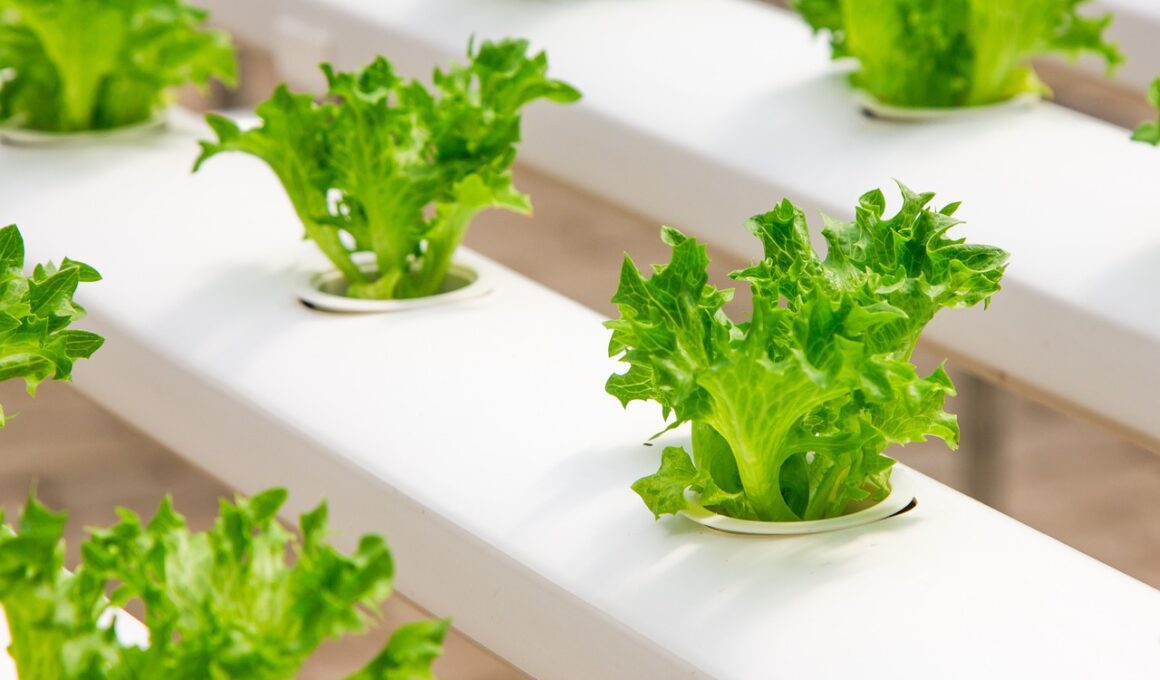If you’re new to hydroponics, you may be wondering how to treat tap water for your plants. After all, water is the lifeblood of your hydroponic system, and it’s crucial to make sure it’s clean and safe for your plants.
Fortunately, treating tap water for hydroponics is relatively easy, and with a few simple steps, you can ensure that your plants are healthy and thriving.
First and foremost, it’s important to understand the importance of water quality in hydroponics. Unlike traditional soil-based gardening, hydroponics relies on a nutrient-rich water solution to feed your plants. This means that any impurities or contaminants in your water can have a direct impact on the health and growth of your plants.
In this article, we’ll explore the different methods for treating tap water for hydroponics, including reverse osmosis, dechlorination, and pH adjustment. By the end, you’ll have a clear understanding of how to maintain a healthy hydroponic garden and keep your plants safe and happy.
The Importance of Water Quality in Hydroponics
Maintaining optimal water quality is crucial for the success of a hydroponic system. It’s the foundation for healthy plant growth and high yields.
Water filtration is an essential step in treating tap water for hydroponics. It removes harmful contaminants, such as chlorine, chloramines, and heavy metals, that can harm plant roots and slow down growth. A good water filtration system for hydroponics should remove 90-95% of the contaminants in tap water.
Reverse osmosis filters are among the most effective. They use a semipermeable membrane to remove impurities and produce clean water that is free of chlorine, fluoride, and other unwanted chemicals. Once the water is filtered, nutrient supplementation can begin.
Nutrient supplementation is the process of adding essential minerals to the water to create a nutrient solution that plants can absorb through their roots. The right nutrient balance is crucial for plant health and growth. The type and amount of nutrients needed will vary depending on the plant species, growth stage, and other factors.
However, it’s important to avoid over-fertilizing, as this can lead to nutrient toxicity and damage to the plants. With proper water filtration and nutrient supplementation, you can create an optimal growing environment for your hydroponic plants.
Reverse Osmosis
If you want to ensure your plants receive pure and filtered water, consider investing in a reverse osmosis system. This system uses an RO membrane to remove impurities and contaminants from tap water, resulting in high-quality water for your hydroponic plants.
Here are some prefiltration techniques that are commonly used with reverse osmosis systems:
-
Sediment filtration: This technique involves removing larger particles and debris from the water before it enters the reverse osmosis membrane. This helps to prevent clogging and prolong the life of the membrane.
-
Carbon filtration: This technique uses activated carbon to remove chlorine, organic compounds, and other chemicals that could damage the RO membrane. It also helps to improve the taste and odor of the water.
-
Water softening: Hard water can cause scaling and buildup on the RO membrane, reducing its effectiveness. Water softeners remove minerals like calcium and magnesium, which cause hardness, from the water.
-
pH adjustment: Reverse osmosis systems can produce water with a low pH, which is not ideal for hydroponic plants. pH adjustment techniques can be used to raise the pH of the water and make it more suitable for plant growth.
By investing in a reverse osmosis system and using prefiltration techniques, you can ensure that your hydroponic plants receive clean and pure water. This will help to prevent disease and nutrient deficiencies, leading to healthier and more productive plants.
Is Tap Water Safe to Use for Hydroponics Without Treatment?
Using tap water for hydroponics without treatment can be problematic. Tap water often contains minerals and chemicals that can negatively affect the pH balance and nutrient absorption in hydroponic systems. It is recommended to treat tap water before use to ensure its safety and optimize plant growth.
Dechlorination
If you want to remove chlorine from your tap water before using it for hydroponics, there are a few methods you can try.
One option is to use a dechlorination agent, which can neutralize the chlorine in the water. However, this method may add other chemicals to the water, which could affect the pH balance of your plants.
Another option is to let the water sit out for 24 hours before using it, as this can allow the chlorine to evaporate.
Methods for Removing Chlorine
To effectively remove chlorine from your water source for hydroponics, there are two primary methods you can use. The first method is to use a dechlorinator, which is a device that removes chlorine from water through a process called chemical filtration. Dechlorinators typically use activated carbon adsorption to remove chlorine, which is a process that involves the carbon adsorbing the chlorine molecules as the water passes through it. This effectively removes the chlorine from the water, leaving it safe for use in your hydroponic system.
The second method for removing chlorine is to let the water sit out for at least 24 hours before using it in your hydroponic system. This method is effective because chlorine will naturally evaporate from the water over time. However, it’s important to note that this method isn’t as reliable as using a dechlorinator, as the amount of chlorine in your water may vary depending on your location and water source. Ultimately, the best method for removing chlorine from your water will depend on your specific situation and preferences.
Pros and Cons
Now let’s take a closer look at the pros and cons of each method for removing chlorine from your water source, so you can make an informed decision based on your individual needs and circumstances. Here are some advantages and disadvantages of various chlorine removal methods:
-
Boiling: Boiling water is an easy and effective way to remove chlorine. It’s quick and doesn’t require any special equipment. However, boiling can be time-consuming if you need to treat large volumes of water, and it doesn’t remove other contaminants that may be present in your water source.
-
Dechlorination Drops: Dechlorination drops are designed specifically to remove chlorine from tap water. They’re easy to use and relatively inexpensive. However, they can leave a residue in your water and may not be effective against other contaminants.
-
Carbon Filters: Carbon filters are a popular choice for removing chlorine from tap water. They’re effective and can remove other contaminants as well. However, they can be expensive and may need to be replaced frequently.
-
Reverse Osmosis: Reverse osmosis is a highly effective method for removing chlorine and other contaminants from tap water. It produces high-quality water that’s ideal for hydroponics. However, it can be expensive and may require professional installation.
Each method has its own benefits and drawbacks, so it’s important to consider your individual needs and circumstances when choosing a chlorine removal method for your hydroponic system.
pH Adjustment
Adjusting pH levels is key to ensuring healthy plant growth and preventing nutrient deficiencies in your hydroponic setup. pH regulation is important because it affects the nutrient absorption of your plants. If the pH of your water is too high or too low, your plants may not be able to absorb all the nutrients they need, leading to stunted growth or even death.
To adjust the pH of your tap water, you can use various methods such as pH up or pH down solutions, vinegar, or baking soda. It’s important to note that different plants have different pH preferences, so it’s essential to monitor and adjust the pH accordingly. You can use a pH testing kit to check the pH level of your water regularly.
Here’s a table that shows the optimal pH range for some common hydroponic plants:
| Plant | Optimal pH Range |
|---|---|
| Lettuce | 5.5-6.5 |
| Tomatoes | 5.5-6.5 |
| Spinach | 6.0-7.0 |
| Strawberries | 5.5-6.5 |
By adjusting the pH levels of your tap water to the optimal range for your plants, you can ensure that they receive all the necessary nutrients for healthy growth. Remember to test the pH regularly and adjust it as needed to prevent nutrient deficiencies and ensure optimal plant growth.
Tips for Maintaining a Healthy Hydroponic Garden
Maintaining a healthy hydroponic garden requires consistent attention and care, but with these tips, you’ll be able to keep your plants thriving without too much hassle.
First, consider hydroponic pest control methods to prevent harmful insects from damaging your crops. This can include introducing beneficial insects like ladybugs or using organic pesticides that won’t harm your plants. Regularly inspecting your plants for any signs of infestation is also crucial for catching and treating any issues early.
Second, ensure that your plant nutrient solutions are properly balanced to provide your plants with the necessary nutrients. This can involve regularly monitoring pH levels, adjusting nutrient levels, and using high-quality plant fertilizers. Investing in a reliable testing kit and researching the specific nutrient requirements of your plants can help you maintain a healthy nutrient balance.
Lastly, maintaining a clean and sterile hydroponic system can prevent the growth of harmful bacteria and fungi. This involves regularly cleaning and sterilizing equipment, preventing cross-contamination, and monitoring water quality.
By implementing these tips, you can maintain a healthy hydroponic garden that produces healthy and thriving crops.
Frequently Asked Questions
What are the best types of hydroponic systems to use tap water with?
When it comes to hydroponics and using tap water, choosing appropriate hydroponic setups is key. Not all systems are created equal, and some are better suited to tap water than others.
However, using filtered water in hydroponics can provide numerous benefits, such as reducing the risk of bacterial growth and ensuring plants receive the proper nutrients. So, when selecting a hydroponic system to use with tap water, consider options like deep water culture or nutrient film technique, which require less maintenance and have fewer opportunities for contamination.
Ultimately, the right system and proper filtration can help ensure the safety and success of your hydroponic plants.
How often should I change the water in my hydroponic system?
Maintaining optimal water quality in your hydroponic system is crucial for your plants’ health and growth. This means regularly monitoring the pH levels of your water and adjusting as necessary to keep it in the optimal range.
It’s also important to periodically change the water in your system to prevent the buildup of harmful bacteria and minerals. The frequency of water changes depends on the size of your system and the number of plants you have. However, a good rule of thumb is to change the water every two to three weeks.
By closely monitoring your water quality and changing it regularly, you can ensure that your plants thrive and produce a bountiful harvest.
Can I use tap water straight from the faucet for hydroponics?
When it comes to hydroponics, the quality of water you use can make a big difference in the health and growth of your plants. While tap water is convenient and readily available, it may contain impurities that can harm your plants.
The benefits of using filtered water in hydroponics are clear – you’ll eliminate any harmful chemicals or minerals that could negatively impact your plants. However, if you’re on a budget, using tap water can be a viable option. Just keep in mind that there are pros and cons of using tap water vs distilled water in hydroponics.
Tap water is easy to access, but it may contain chlorine, fluoride, or other minerals that can build up in your system over time. On the other hand, distilled water is pure and free of impurities, but it can be more expensive and time-consuming to obtain.
Ultimately, the decision is up to you and your individual needs and preferences.
What is the ideal water temperature for hydroponic plants?
Water temperature affects the rate at which nutrients are absorbed by hydroponic plants. For optimal growth, it’s important to maintain the nutrient solution within a certain temperature range.
The optimal temperature range for nutrient solution is between 65-75°F (18-24°C). At lower temperatures, nutrient absorption rates decrease, while higher temperatures can lead to root rot and other plant diseases.
It’s important to regularly monitor and adjust the temperature of your nutrient solution to ensure your plants are getting the nutrients they need to thrive.
How can I tell if my tap water has high levels of dissolved minerals or other contaminants that could harm my plants?
To ensure the safety of your hydroponic plants, it’s crucial to test your tap water for dissolved minerals and other contaminants that may harm your plants. Testing methods can vary from simple home test kits to more advanced laboratory testing.
Once you identify any potential issues, there are a variety of water treatment options available to address the specific problem. For example, reverse osmosis systems can remove dissolved minerals, while carbon filters can help eliminate chlorine and other chemicals.
It’s important to note that different plants may have different water requirements, so it’s always best to research your specific plant’s needs before treating your tap water for hydroponics.
Conclusion
So, now you know how important it is to treat tap water for hydroponics and how to do it. Water quality is key to a healthy hydroponic garden, and taking the time to properly treat your tap water will pay off in the long run.
By using a reverse osmosis system, dechlorinating your water, and adjusting the pH level, you can ensure that your plants have the best possible growing environment.
Don’t forget to regularly test and monitor your water quality, and make any necessary adjustments to maintain a healthy balance.
With these tips, you’ll be well on your way to a thriving hydroponic garden.









